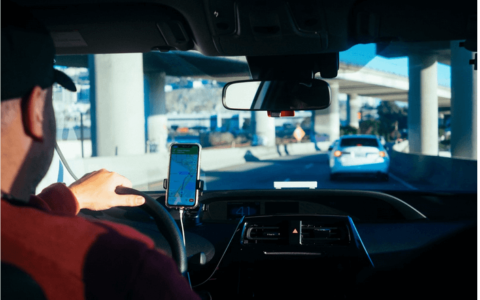12 Winter Weather Driving Tips for Your FedEx Drivers
If you drive for work, you don’t have the luxury of escaping the snow. Furthermore, as we speak, many parts of the country are experiencing snow and icy roads. Unfortunately, it doesn’t matter how bad the roads are. Unless they’re closed, you still have to make your deliveries, and it’s best to be prepared for these conditions in advance.
Did you know that approximately 70 percent of the roads in the United States are located in snowy regions? A majority of these roads are driven by truckers, including shipping services. Snowy weather is responsible for 24 percent of weather-related vehicle crashes each year, attributing to 900 fatalities and more than 75,000 injuries.
The danger is very real, particularly for large vehicles, like trucks, that have unique needs during the winter. Even if you live in a warm state and drive mostly non-snowy routes, as a FedEx delivery truck driver, it’s essential that you learn how to handle the snowy conditions you’ll see throughout the country.
- Be Prepared

If you know your employees might hit some adverse weather on the road, take a page out of the Boy Scout’s book, and don’t let them leave unprepared. Every truck should be equipped with emergency supplies like emergency blankets, extra clothing, food and water, jumper cables, tire chains, extra fuel, shovel, first aid kit, flashlight, and anything else you think might be useful for your particular delivery route.
- Complete Pre-Trip Inspections

Create a policy that requires your drivers to inspect their vehicles before every trip, and make it mandatory. They should check things such as tire pressure and tread, wiper blades, lights, oil, and more. When the weather turns cold, it increases the risk of issues with your vehicles.
- Slow Down

Most winter weather-related accidents happen because drivers are simply going too fast. When it’s icy and visibility is low, drivers need enough time to react when they hit a patch of ice or a car in front of them slams their brakes. Especially when driving a large vehicle like a FedEx truck, it’s essential that you maintain appropriate speeds for the road conditions.
- Give Full Attention to the Road
There are a lot of distractions present in vehicles, including two-way radio conversations, music, cell phones, and passengers. Encourage your drivers to reduce the amount of distractions they have in their cab so they can focus on driving safely.
- Put the Phone Away
According to a 2014 study, cellphone use is the culprit behind one out of every four accidents. Whether it’s talking, texting, or web browsing, cell phone use is very tempting on lonely rides, but for the safety and security of your drivers, ban their use from your vehicles.
- Recognize the Signs of Black Ice
Many accidents can be prevented with proper education. Teaching your drivers to recognize the signs of black ice, for example, can help to prevent future accidents. Black ice occurs when a thin layer of ice forms on the road, but it looks wet rather than frozen. Many drivers hit this ice thinking it’s only water. The momentum causes them to skid out of control. If there’s ice on your car, or spray isn’t coming from the cars driving in front of you, know that black ice is a real possibility.
- Know How to Handle the Vehicle on Ice
In the event that you run into a patch of black ice, know what to do. The most important thing is to avoid slamming on your brakes, which will cause you to slide even more. In addition, attempt to straighten out your wheel by moving it in the same direction that you’re spinning. This will help you gain control over the vehicle until you can reach non-icy ground.
- Obey Road Signs and Weather Advisories
When a sign or authority advises you to slow down or avoid a road because of weather, make sure you listen and comply. These warnings are posted for your safety and the safety of everyone around you, so don’t ignore them.
- Don’t Be Afraid to Pull Over Safely
Nothing is more important than the safety of the driver. In the event that the roads become too hazardous to drive, instruct your drivers to pull over in a safe area. Parking on the shoulder of the road can be hazardous if visibility is low. Instead, look for a rest stop or gas station where you can park and wait out the storm.
- Keep Your Distance
Tailgating has no business on a FedEx route, whether it’s snowy outside or not. Keep a safe distance behind all other cars to give everyone enough time to react if a car slides off the road or faces another disaster.
- Clean Lights, Mirrors, and Windows
Visibility is very important during the winter, but drivers often get lazy and don’t scrape the ice off their lights, mirrors, and windows before heading out. This is a major safety concern, since visibility in large vehicles is often low anyway. Increasing visibility during winter weather conditions is essential to a safe experience.
- Be Careful Over Bridges
When approaching bridges or overpasses during the winter, be extra cautious. Elevated structures are infamous for being icier than the rest of the road because they don’t have ground heat beneath them to help thaw the ice. Black ice is common on bridges in the winter, so it’s important to slow down and proceed with caution over bridges when it’s cold and snowy outside.
Contact KR Capital Today!
Looking for a knowledgeable broker service to help you purchase and run your FedEx routes? KR capital can help. Our mission is to help FedEx contractors all over the country make their routes as valuable as possible. For more tips and information about anything to do with valuing, buying, and selling your FedEx delivery routes, contact us today!



